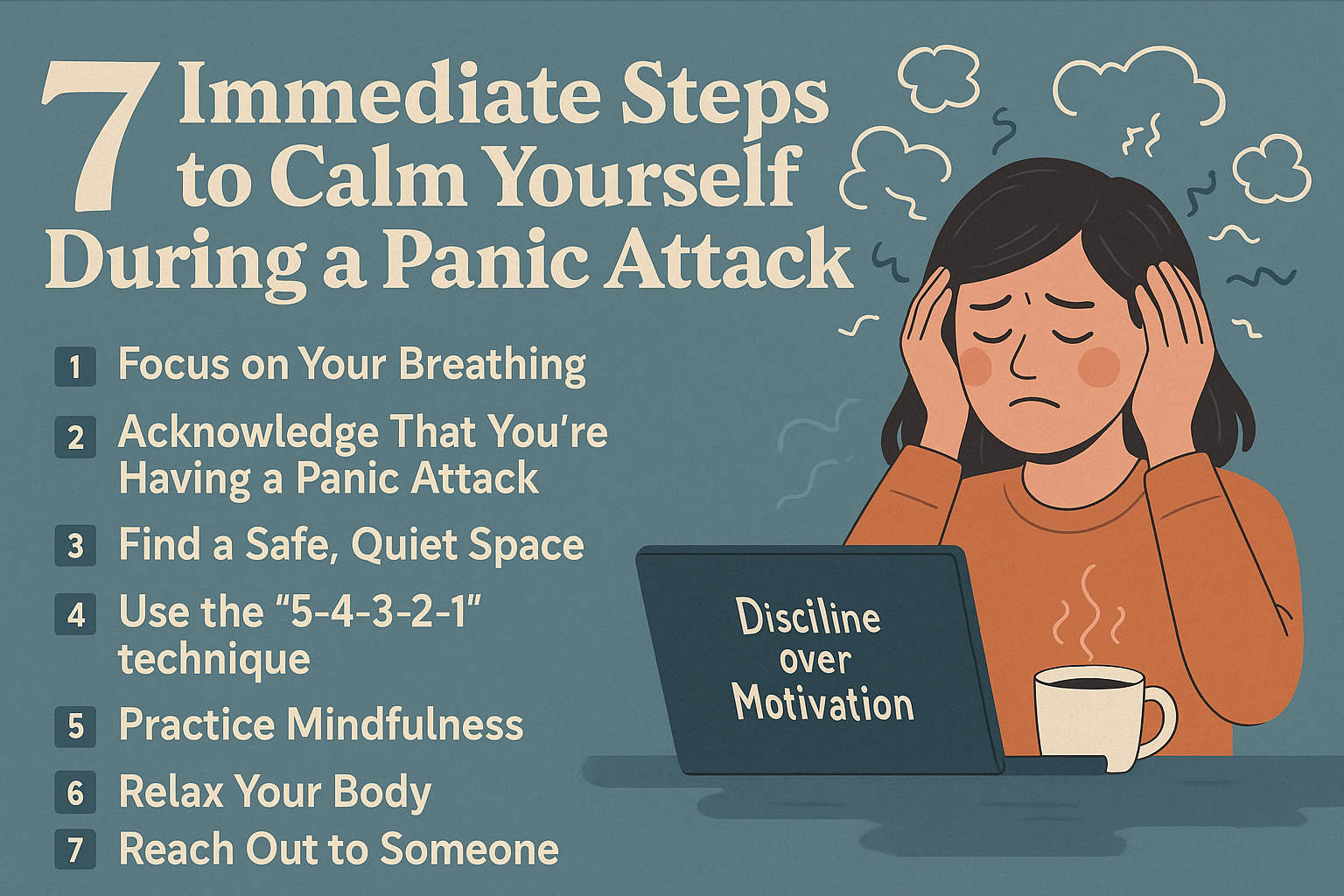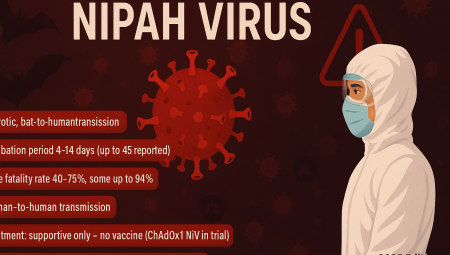A panic attack can be a terrifying and overwhelming experience. The sudden onset of intense fear, accompanied by terrifying physical sensations like a pounding heart, shortness of breath, and dizziness, can make you feel as if you’re losing control, having a heart attack, or even dying. In those moments, the primary thought often becomes: “How can I try to calm myself down while I’m having a panic attack?”
You’re not alone in facing this challenge. Millions worldwide experience panic attacks, and the good news is that there are highly effective strategies you can employ to regain a sense of control and navigate through the storm. This comprehensive guide provides actionable, expert-backed techniques to help you calm yourself during a panic attack, emphasizing what works best in these acute moments of distress.
What Happens During a Panic Attack? Understanding the “Fight or Flight” Response
To effectively calm yourself during a panic attack, it helps to understand what’s happening in your body. A panic attack is essentially an exaggerated “fight or flight” response, triggered when your brain perceives a non-existent threat as extreme danger. This causes a sudden surge of adrenaline and other stress hormones, leading to the intense physical and psychological symptoms you experience.
Key aspects of this response include:
- Hyperventilation: Rapid, shallow breathing, leading to too much oxygen and too little carbon dioxide, which can cause dizziness, tingling, and lightheadedness.
- Adrenaline Rush: Causes your heart to race, muscles to tense, and senses to heighten, preparing your body for action.
- Cognitive Distortions: Thoughts can become irrational, focusing on immediate danger (e.g., “I’m dying,” “I’m going crazy”).
7 Immediate Steps: How Can I Try to Calm Myself Down While I’m Having a Panic Attack?
When a panic attack strikes, these techniques can help you anchor yourself and guide your body and mind back to a state of calm. Practice them when you’re not having an attack so they become second nature.
1. Focus on Your Breath: The Anchor in the Storm
Your breath is your most powerful tool. During a panic attack, breathing becomes shallow and rapid, exacerbating symptoms. Deep, controlled breathing signals to your brain that you’re safe.
- The 4-7-8 Breathing Method: Inhale slowly through your nose for 4 counts. Hold your breath for 7 counts. Exhale completely through your mouth with a whooshing sound for 8 counts. Repeat this cycle several times. This method helps regulate oxygen and carbon dioxide levels, calming your nervous system.
- Diaphragmatic Breathing: Place one hand on your chest and the other on your stomach. As you inhale, your stomach should rise, not your chest. Exhale slowly, feeling your stomach fall. This engages your diaphragm, promoting deeper relaxation.
2. Acknowledge and Accept (Don’t Fight It)
It sounds counterintuitive, but fighting a panic attack often makes it worse. Trying to suppress the fear can intensify the body’s alarm response.
- Tell Yourself: “This is a panic attack. It’s uncomfortable, but it will pass. I am safe.”
- Observe Without Judgment: Instead of fighting the symptoms, acknowledge them. “My heart is pounding, and that’s okay. My hands are trembling, and that’s okay.” This detachment can reduce the fear of the symptoms themselves.
3. Ground Yourself with the 5-4-3-2-1 Technique
When your mind is racing, engaging your senses can pull you back to the present moment and away from overwhelming thoughts.
- 5 Things You Can See: Look around and name five things you can see (e.g., “I see the lamp, the book, the wall, my hand, the window”).
- 4 Things You Can Feel: Notice four things you can feel (e.g., “I feel my feet on the floor, the texture of my shirt, the air on my skin, the chair supporting me”).
- 3 Things You Can Hear: Identify three things you can hear (e.g., “I hear the fan, traffic outside, my own breathing”).
- 2 Things You Can Smell: Notice two things you can smell (e.g., “I smell my coffee, the scent of fresh air”).
- 1 Thing You Can Taste: Identify one thing you can taste (e.g., “I taste my toothpaste, water”).
4. Engage in Gentle Movement or Distraction
If sitting still feels impossible, some gentle, purposeful movement can help dissipate the adrenaline.
- Walk Slowly: Take a short, slow walk, focusing on the sensation of your feet on the ground.
- Pace: If you need to pace, do so calmly, focusing on your steps.
- Simple Task: Engage in a simple, repetitive task, like counting backwards from 100 by threes, or naming all the blue objects in the room.
5. Find a Safe Space
If your current environment feels overwhelming, try to move to a quieter, less stimulating place if possible.
- Seek Quiet: Go to an empty room, step outside, or find a corner where you can feel more secluded.
- Reduce Stimuli: Dim the lights, turn off loud music, or close your eyes briefly if the visual input is too much.
6. Use Affirmations and Self-Talk
Positive and rational self-talk can help challenge the negative thought patterns often present during a panic attack.
- “This feeling is temporary, it will pass.”
- “I am safe, this is just anxiety.”
- “I have gotten through this before, and I will get through it again.”
- “My body is just reacting; there is no real danger.”
7. Hydrate Slowly
Sip a small amount of water. The act of swallowing and the sensation of water can be grounding and help regulate your breath. Avoid chugging, which can worsen nausea.
When to Seek Professional Help for Panic Attacks
While these self-calming techniques are incredibly valuable, they are most effective as part of a broader strategy for managing panic disorder or anxiety. If you frequently experience panic attacks, or if they significantly impact your daily life, it’s crucial to seek professional help. In 2025, mental health resources are more accessible than ever, with many therapists offering online sessions.
Consider consulting:
- A General Practitioner: To rule out any underlying medical conditions.
- A Therapist or Psychologist: Specialized in cognitive-behavioral therapy (CBT) or exposure therapy, which are highly effective for panic disorder.
- A Psychiatrist: For medication management if deemed necessary.
Pro Tips for Long-Term Panic Attack Management in 2025
- Identify and Understand Your Triggers: Keep a panic attack journal. Note what you were doing, thinking, and feeling before an attack. This helps you identify patterns and avoid or manage specific triggers.
- Regular Mindfulness Practice: Consistent daily mindfulness meditation, even for 5-10 minutes, can rewire your brain over time to be less reactive to stress. Apps like Calm or Headspace are great starting points.
- Prioritize Sleep: Lack of sleep can significantly increase anxiety and susceptibility to panic attacks. Aim for 7-9 hours of quality sleep per night.
- Limit Stimulants: Reduce or eliminate caffeine, nicotine, and excessive sugar, which can trigger or exacerbate panic symptoms.
- Build a Strong Support System: Talk openly with trusted friends, family, or a support group. Having people who understand can reduce feelings of isolation and provide comfort.
- Healthy Lifestyle: Regular exercise, a balanced diet, and avoiding excessive alcohol or recreational drugs are fundamental to overall mental well-being and reducing panic vulnerability.
Frequently Asked Questions (FAQ)
Q1: How long does a panic attack typically last?
A1: A panic attack typically reaches its peak intensity within 10 minutes and the acute symptoms usually subside within 5 to 20 minutes. While the intense physical and emotional sensations are brief, the residual feelings of exhaustion, shakiness, or fear can linger for an hour or even longer after the attack has passed. The experience can feel much longer than it actually is due to its overwhelming nature.
Q2: Can a panic attack cause me to pass out?
A2: It’s very rare for a panic attack to cause someone to pass out. While you might feel dizzy or lightheaded, the physical symptoms of a panic attack (like increased heart rate and blood pressure) actually counteract fainting. Fainting typically occurs when blood pressure drops. Feeling faint is a common symptom, but actual unconsciousness is highly uncommon.
Q3: What’s the difference between a panic attack and an anxiety attack?
A3: While often used interchangeably, a panic attack is a sudden, intense surge of overwhelming fear that peaks within minutes, often with no clear trigger, involving severe physical symptoms like chest pain or choking. An anxiety attack (a common term, not a clinical diagnosis) is a more gradual build-up of anxiety symptoms, usually linked to a specific stressor, and is generally less intense and can last longer.
Q4: Should I go to the emergency room during a panic attack?
A4: If you’re experiencing a panic attack for the first time, or if you’re unsure whether your symptoms are due to a panic attack or a genuine medical emergency (like a heart attack), it’s always wise to seek medical attention immediately. It’s better to be safe and get checked out by medical professionals to rule out any underlying physical conditions. If you’re diagnosed with panic disorder, you’ll learn to recognize the symptoms, reducing the need for ER visits.
Conclusion
Knowing “how can I try to calm myself down while I’m having a panic attack” is a powerful tool in reclaiming control over your well-being. By utilizing breathing techniques, grounding exercises, and self-compassionate self-talk, you can significantly reduce the intensity and duration of these episodes. Remember, these strategies are a starting point. For persistent panic attacks, professional support from mental health experts is invaluable for long-term recovery and a more peaceful life.
What coping strategies have you found most effective during a panic attack? Share your experiences and insights in the comments below – your wisdom could help someone else in need.



